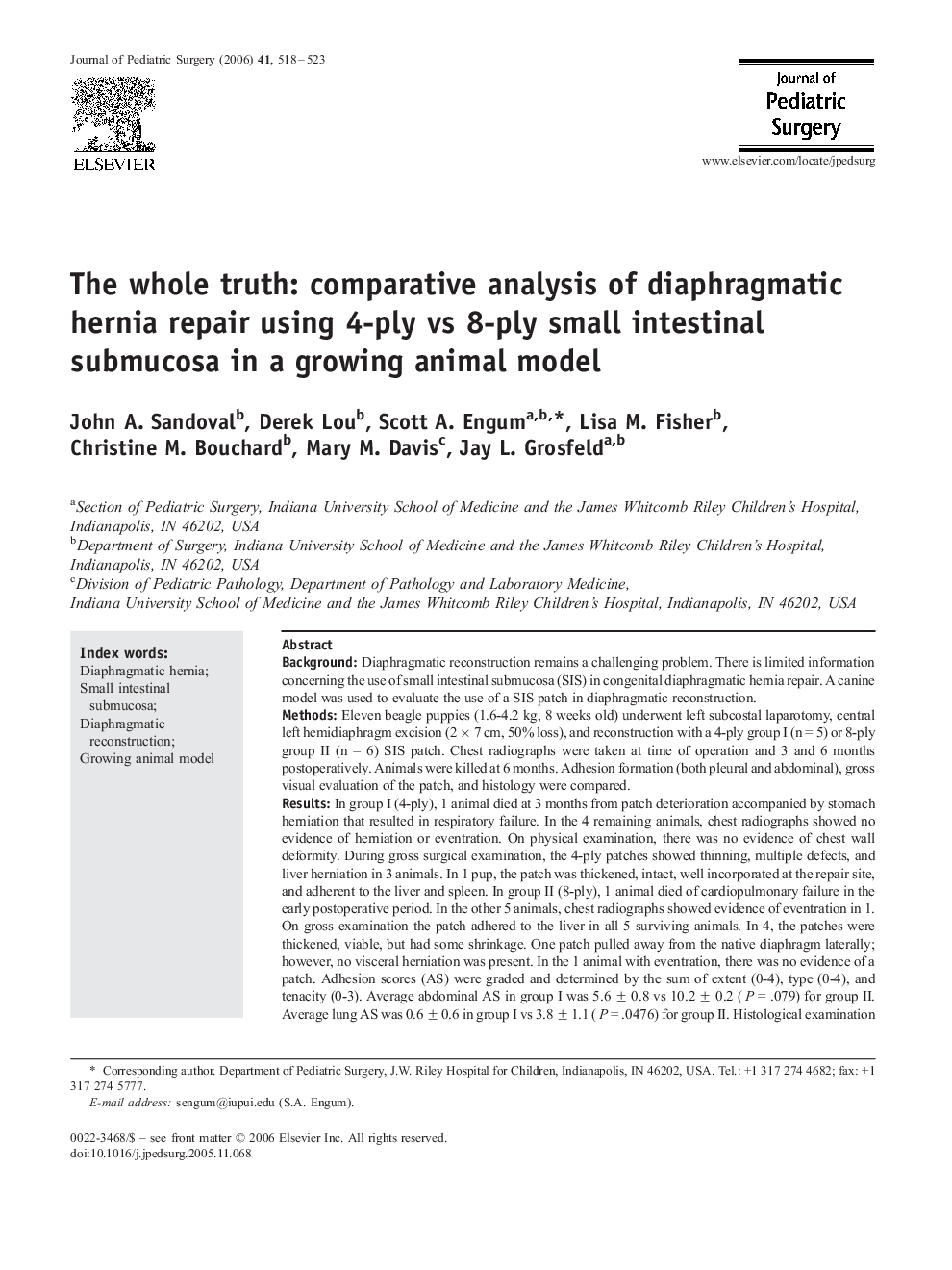| Article ID | Journal | Published Year | Pages | File Type |
|---|---|---|---|---|
| 4160923 | Journal of Pediatric Surgery | 2006 | 6 Pages |
BackgroundDiaphragmatic reconstruction remains a challenging problem. There is limited information concerning the use of small intestinal submucosa (SIS) in congenital diaphragmatic hernia repair. A canine model was used to evaluate the use of a SIS patch in diaphragmatic reconstruction.MethodsEleven beagle puppies (1.6-4.2 kg, 8 weeks old) underwent left subcostal laparotomy, central left hemidiaphragm excision (2 × 7 cm, 50% loss), and reconstruction with a 4-ply group I (n = 5) or 8-ply group II (n = 6) SIS patch. Chest radiographs were taken at time of operation and 3 and 6 months postoperatively. Animals were killed at 6 months. Adhesion formation (both pleural and abdominal), gross visual evaluation of the patch, and histology were compared.ResultsIn group I (4-ply), 1 animal died at 3 months from patch deterioration accompanied by stomach herniation that resulted in respiratory failure. In the 4 remaining animals, chest radiographs showed no evidence of herniation or eventration. On physical examination, there was no evidence of chest wall deformity. During gross surgical examination, the 4-ply patches showed thinning, multiple defects, and liver herniation in 3 animals. In 1 pup, the patch was thickened, intact, well incorporated at the repair site, and adherent to the liver and spleen. In group II (8-ply), 1 animal died of cardiopulmonary failure in the early postoperative period. In the other 5 animals, chest radiographs showed evidence of eventration in 1. On gross examination the patch adhered to the liver in all 5 surviving animals. In 4, the patches were thickened, viable, but had some shrinkage. One patch pulled away from the native diaphragm laterally; however, no visceral herniation was present. In the 1 animal with eventration, there was no evidence of a patch. Adhesion scores (AS) were graded and determined by the sum of extent (0-4), type (0-4), and tenacity (0-3). Average abdominal AS in group I was 5.6 ± 0.8 vs 10.2 ± 0.2 (P = .079) for group II. Average lung AS was 0.6 ± 0.6 in group I vs 3.8 ± 1.1 (P = .0476) for group II. Histological examination showed group II patches had greater collagen deposition with central calcification and mild inflammation within the residual graft, whereas group I patches were much thinner and were composed of granulation tissue without evidence of residual graft.ConclusionsThese data indicate that 8-ply SIS repair of diaphragmatic defects was superior (80%; 4/5 to 4-ply, 20%; 1/5, success). Organ adherence appears to be necessary for neovascularization of the SIS composite. Eight-ply grafts appear to be more durable and persist for a longer period, which may improve neovascularization. Long-term follow-up to evaluate remodeling characteristics of the patch material is required.
